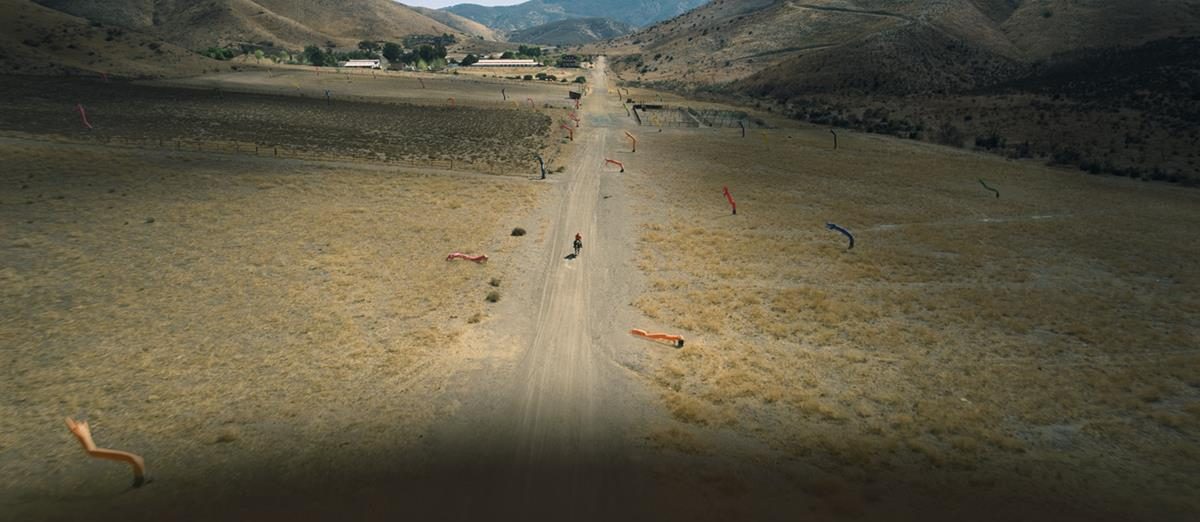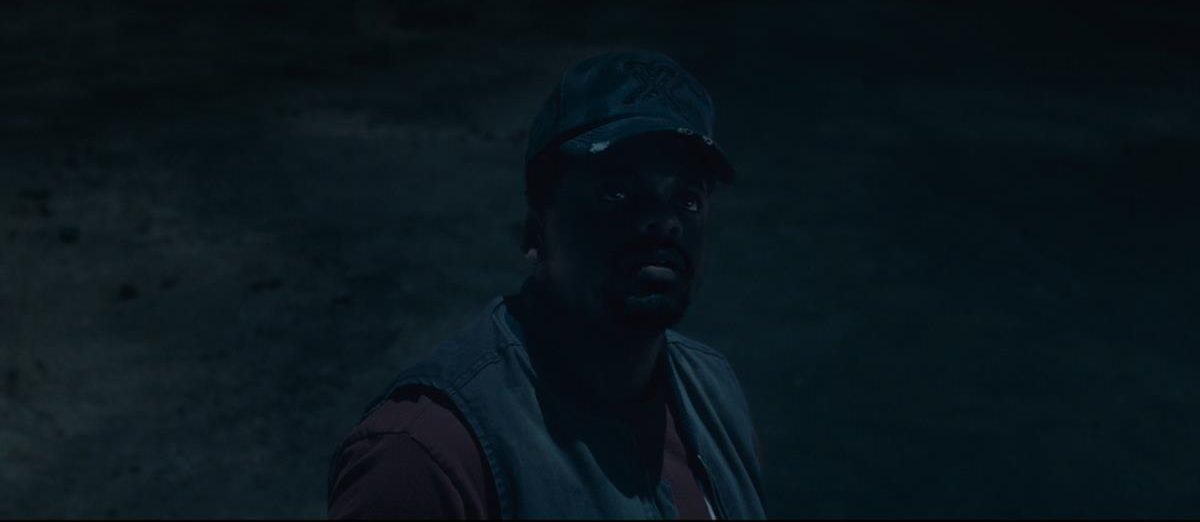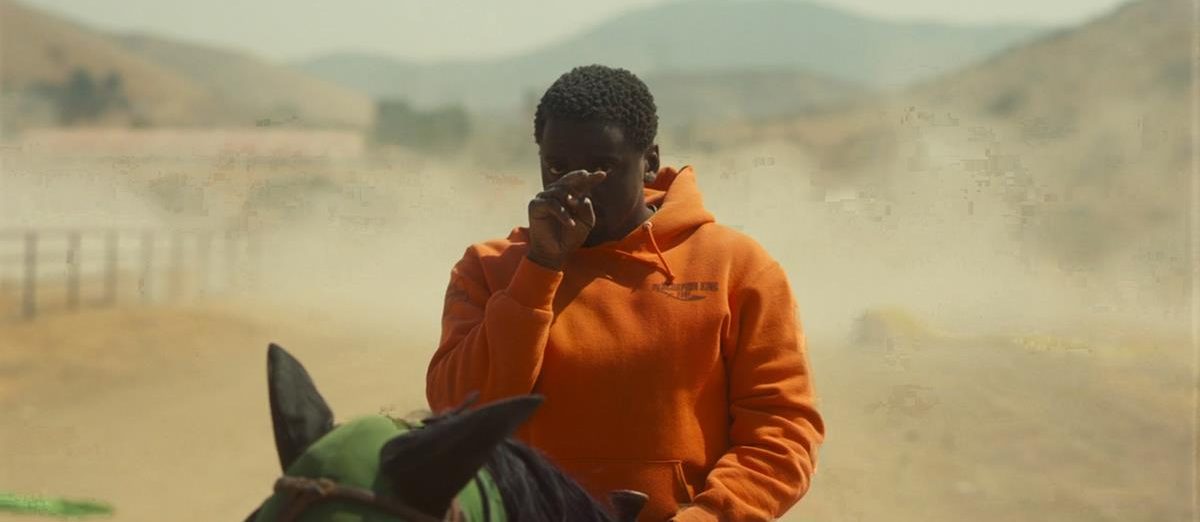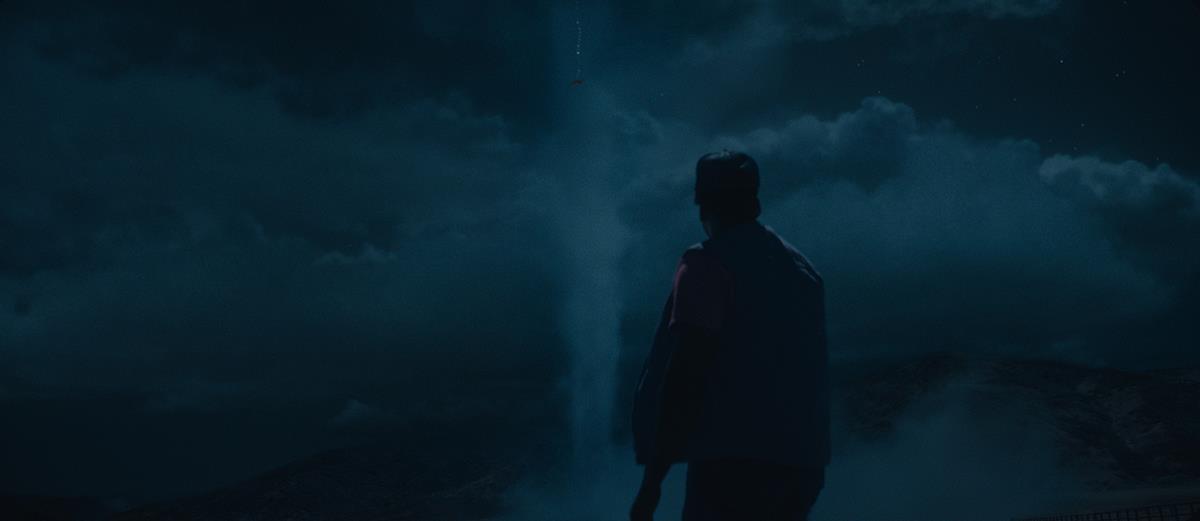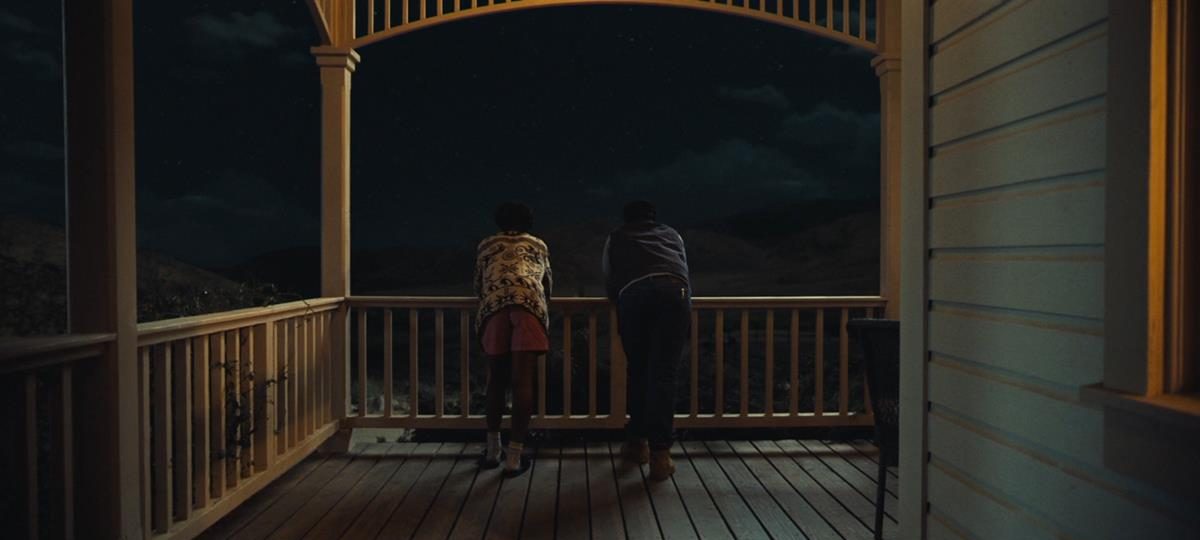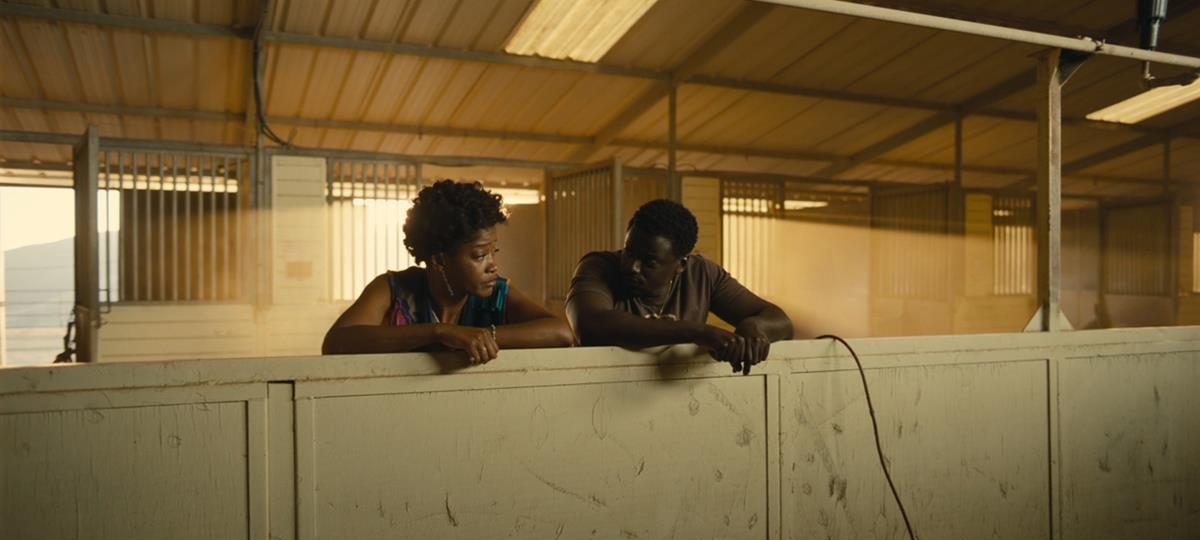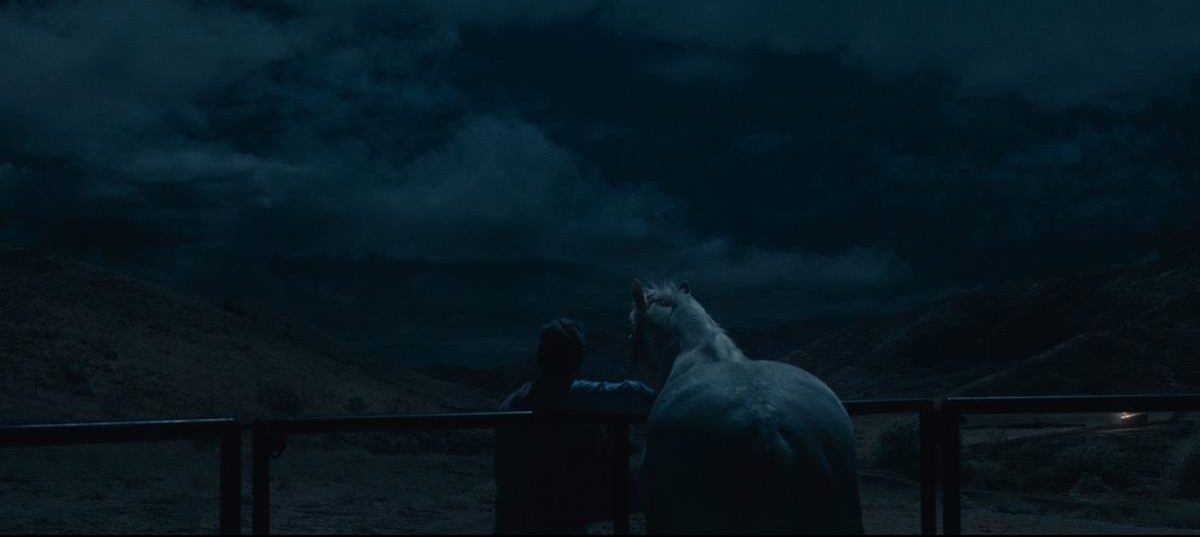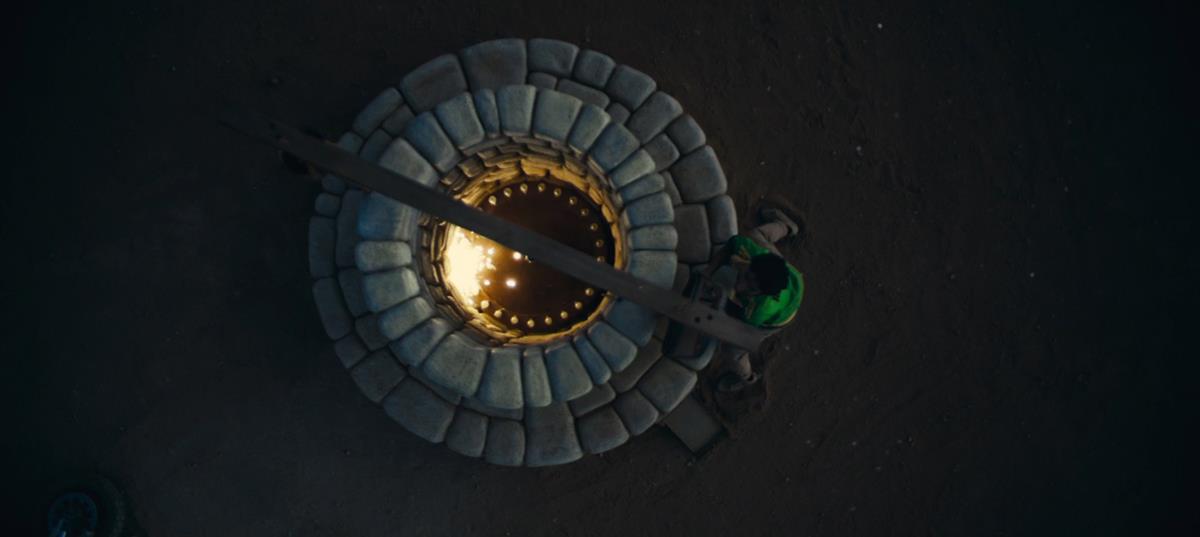
The teasing, cryptic marketing campaign for Nope didn’t reveal much other than it was from the mastermind of Jordan Peele. From the director of Get Out and Us, audiences might imagine a new psychological horror, perhaps just not one that involves UFOs and filmed as a popcorn spectacle, not an arthouse satire.
It prompted articles like one at Vanity Fair from Chris Murphy, “Everything We Know About Jordan Peele’s Nope” — which, it turns out, is not a lot.
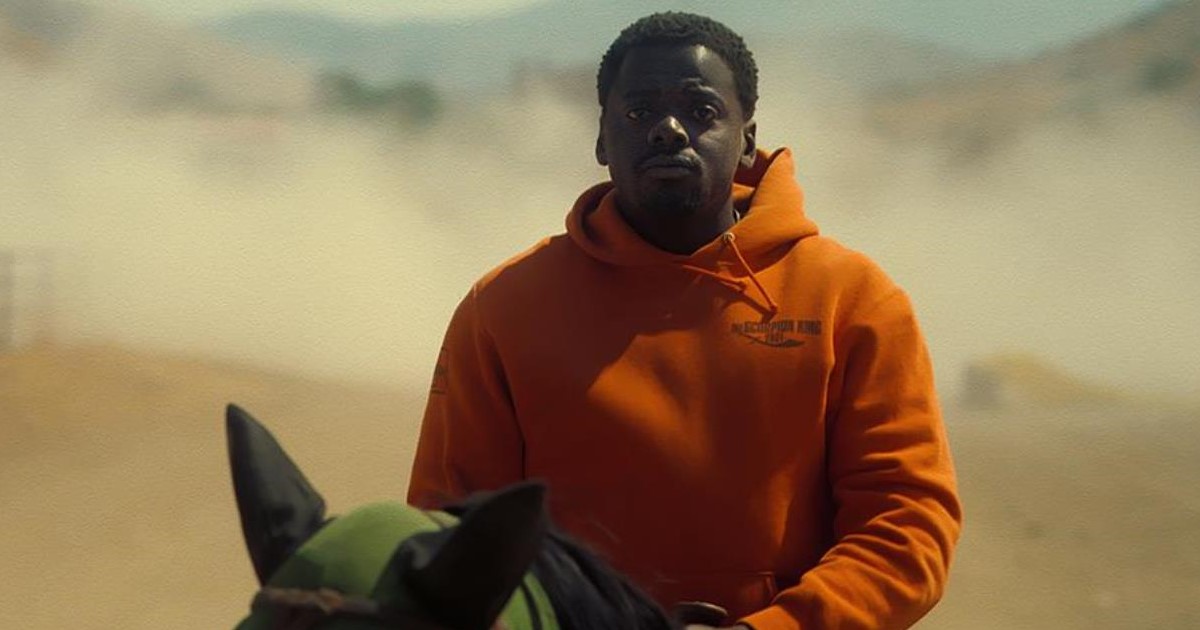
That’s as it should be. Far better to go into a film without the preconceptions of critics — or even of a plot — or, in this case, of a genre. It seems to be sci-fi horror with comedy and drama, shot through with Peele’s trademark satire.
READ MORE: Everything We Know About Jordan Peele’s Nope (Vanity Fair)
Peele also aims to deliver pure entertainment, feeling that’s what we missed and what cinema needs to drive us back to the darkness of the theater.
The Universal Pictures film, which stars Daniel Kaluuya and Keke Palmer as a brother and sister who run Hollywood’s only Black-owned horse ranch, has prompted plenty of speculation from cinephiles about its UFO plotlines.
“It’s so tricky being considered in the vanguard of Black horror, because obviously Black horror is so very real, and it’s hard to do it in a way that’s not re-traumatizing and sad,” Peele told Brande Victorian at Essence magazine. “I was going into my third horror film starring Black leads, and somewhere in the process I realized that the movie had to be about Black joy as well, in order to fit what the world needs at this moment.”
Slash Film’s Sandy Schaefer likens Peele to M. Night Shyamalan: “It’s worth noting both Peele and Shyamalan are directors of color who bring a very different perspective to their genre films than their white peers. Even a movie like Us, which isn’t strictly about race so much as a fractured America, can’t help but quietly comment on race and the way it informs the actions of its Black characters.”
“My race, I think, has informed my entire artistic journey, and part of it has been trying to reconcile the box, and the box is that this country puts people of color in and trying to break out of that box,” Peele says in the Slash Film article.

“Even with the simple act of putting Black heroes in a movie like Nope, Peele is already setting the film apart from so many entries in the alien invasion genre before it,” Schaefer observes.
READ MORE: Jordan Peele Explains Why Nope Is A Different Kind Of ‘Flying Saucer Film’ (Slash Film)
It’s partly a homage to Close Encounters of the Third Kind, Spielberg’s 1977 sci-fi epic that made a lasting impression on Peele, who was born two years after it was released.
“I set my sights on the great American UFO story,” he said in an interview for Fandango “And the movie itself deals with spectacle, and the good and bad that come from this idea of attention. It’s a horror epic, but it has some points in it that are meant to elicit a very audible reaction in the theater.”
Jordan Peele told us why he went @IMAX big for #Nope and the specific audience reaction he hopes to elicit.
— Fandango (@Fandango) June 23, 2022
On the biggest screens, July 22! #NOPEMOVIE tickets are on sale now! https://t.co/ZccKmIkXvM pic.twitter.com/lZ4qQpN2BQ
Spectacle means more than just a blockbuster canvas, although this film is made with large format 65mm and IMAX film cameras.
“When you’re shooting on IMAX you just know you’re doing something cinematically special,” Peele said in the production notes. “The image is so overwhelming it feels like you’re there. I wanted immersion, an awe, a fear and a wonder we all had when we were kids.”

LIGHTS, CAMERA, ACTION! SPOTLIGHT ON FILM PRODUCTION:
From the latest advances in virtual production to shooting the perfect oner, filmmakers are continuing to push creative boundaries. Packed with insights from top talents, go behind the scenes of feature film production with these hand-curated articles from the NAB Amplify archives:
- Savage Beauty: Jane Campion Understands “The Power of the Dog”
- Dashboard Confessional: Ryusuke Hamaguchi’s “Drive My Car”
- “Parallel Mothers:” How Pedro Almodóvar Heralds the New Spanish Family
- “The Souvenir Part II:” Portrait of the Artist As a Young Woman
- Life Is a Mess But That’s the Point: Making “The Worst Person in the World”
Threaded throughout the tale, overtly and more subtly, is what it means to be addicted to spectacle (the cinema-going experience, if you will), and to be the subject of spectacle passed through the Hollywood machine (one of the characters is a washed-up child actor), and also what it means to be passed over by the film factory. This means below-the-line artists from stunts to wardrobe as much as it calls out the history of film’s blindness to people of color.
“The first film clip [Eadweard Muybridge’s Animal Locomotion] was essentially a Black man on a horse who has been forgotten and erased,” Peele told Essence. “Part of this film, to me, is a celebration and a response to that. We can be the leads not only of a horror movie but also action, adventure, comedy, etcetera.”
READ MORE: Your Favorite Director’s Favorite Actor: Daniel Kaluuya (Essence)
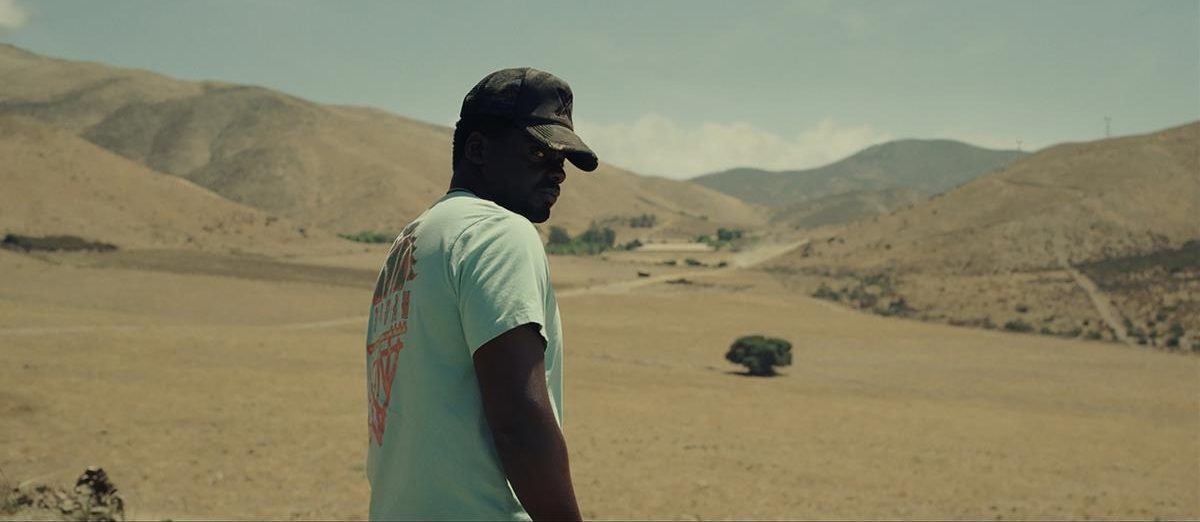
“In a plot twist perhaps only a filmmaker with Peele’s CV could appreciate,” Vulture’s Jason Bailey reveals that photographer and inventor Muybridge, whose experiments in motion-sequence still photography and image projection earned him the title “the Father of Motion Pictures,” was also a “stone-cold murderer.”
In 1874, Muybridge, in a fit of rage shot dead a young newspaperman named Harry Larkyns, who was having an affair with the photographer’s wife.
Wealthy former governor of California Leland Stanford paid for Muybridge’s lawyer, who helped him plead insanity and eventually walk free. Coincidentally, or not, Stanford was also the Englishman’s patron in a photographic quest to prove that when a horse was “at full gallop, all of its hooves were off the ground, making it, essentially, an airborne creature.”
Working on Stanford’s 8,000-acre Palo Alto stock farm, Muybridge developed a spring-activated, high-speed shutter system, with the first trial photos taken in May 1872. Success wasn’t achieved until June 11, 1878, when the now fully acquitted photographer used “a machine constructed on the principle of a music box,” which operated the shutters of 12 cameras in a row, each capturing an exposure of the tiniest shift in the horse’s movement.
Bailey recounts how a year-and-a-half later, Muybridge demonstrated his “zoopraxiscope, a modified magic lantern-style projector. He turned a wheel of images within it, projecting, onto a screen, a two-second clip of a horse in motion. It was, it can be argued, the first exhibition of a ‘motion’ picture.”
READ MORE: The Bloody History Behind Those Moving Pictures in Nope (Vulture)
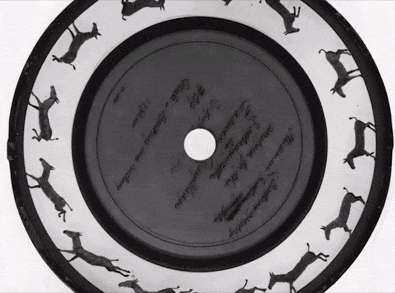
Ben Kenigsberg in The New York Times recognizes that in trying to “snap a photo of an elusive extra-terrestrial presence,” the film’s protagonists are “attempting to capture an impossible shot, with a subject that, like Muybridge’s horses, is too fast to pin down.”
However, Kenigsberg takes slight issue with Peele’s plot point about that first filmic equine experiment.
“Those photographs are not the images shown in Nope,” says Kenigsberg. “The Muybridge works in the movie, with the unnamed rider, are from “Plate Number 626,” part of a later series of locomotion studies that Muybridge began at the University of Pennsylvania in 1884 and published in 1887.”
What’s true, he admits, is that the “the pioneering actor, animal wrangler and stunt man shown in them probably is unknown. He sits alongside the many other male athletes, women mimicking housework and children in Muybridge’s oeuvre: an anonymous cast of characters from early film history.”
READ MORE: ‘Nope,’ Eadweard Muybridge and the Story of ‘The Horse in Motion’ (The New York Times)
“Nope connects [the jockey] to his fictional descendants: skilled professionals whose talents go largely underappreciated and overlooked by others in the industry,” says Charles Pulliam-Moore on The Verge referencing the situation of the ranch-owning Haywoods — “people so low on the call sheet that they’re almost invisible.”
This sense of “being boxed in by others’ preconceptions is one of the ways Nope starts to build up an atmosphere of dread long before any of its human characters realize that they aren’t alone out there in the desert.”
READ MORE: Jordan Peele’s Nope is a breathtaking celebration of filmmaking as an art form (The Verge)
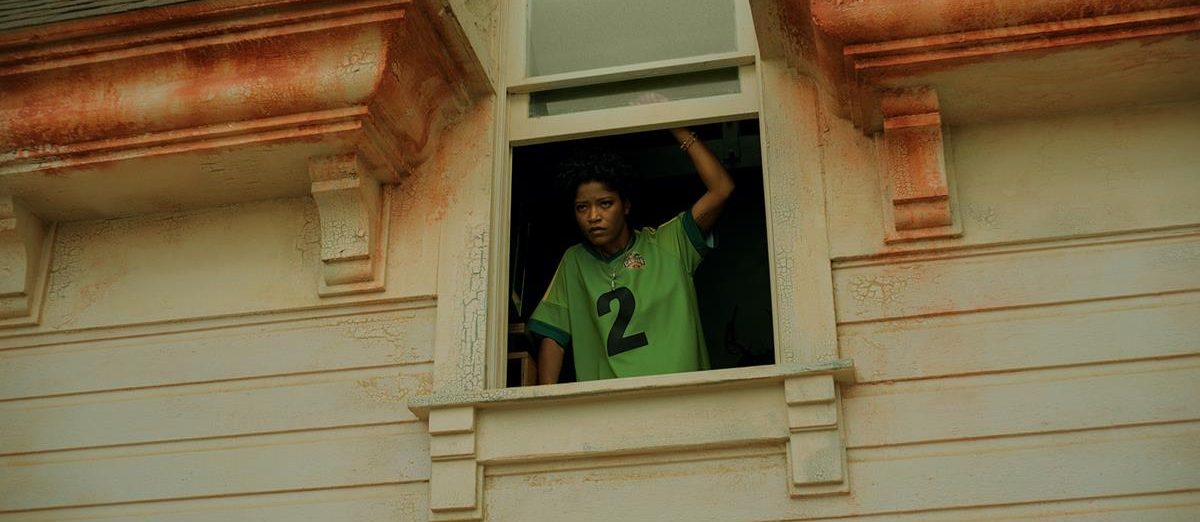
“Peele’s fictional twist on [the Muybridge] story points out that, while the camera has the ability to document, the very nature of cinema will always leave someone unseen,” agrees The Daily Beast’s Coleman Spilde.
“Having laid its narrative foundation in cinema’s earliest forms from the start, Nope spends its runtime tipping its cowboy hat to various notable (and not so notable) films that have come before it.”
Spilde identifies references from films as diverse as Jaws (1975), The Scorpion King (2002), Akira (1988), Creature from the Black Lagoon (1954), Jurassic Park (1993) War of the Worlds (2005), Blade (1998), and The Evil Dead (2013).
“Any good artist can tell you that, while there is plenty of room for original ideas across a vast number of mediums, everything has been done before. What makes something innovative is how it uses those works that have come before it to influence what it wants to say now,” says Spilde. “Nope hands its themes to the audience on a UFO-sized platter in the form of easy-to-read cinematic allusions. But instead of being crushed by lofty comparisons to beloved classics, Nope succeeds because of its willingness to reference.”
READ MORE: We Break Down (Most of) the Film References in ‘Nope’ (The Daily Beast)
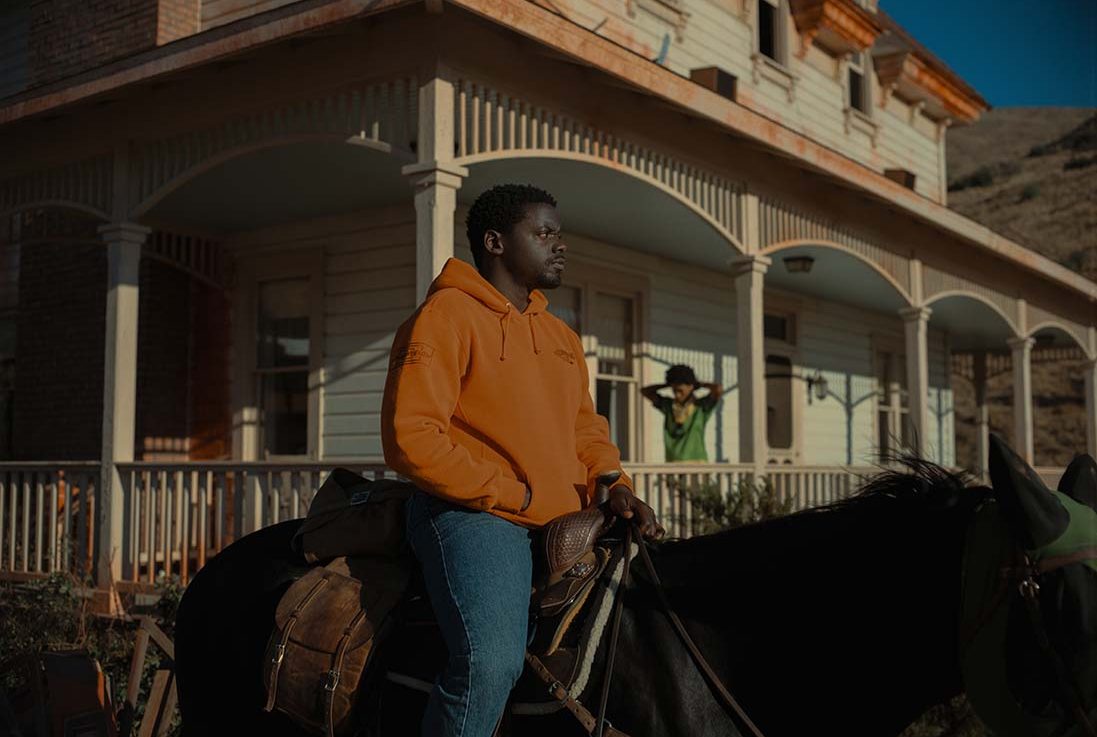
Katie Rife, writing at Vulture, is another keen-eyed easter egg hunter. “Although Nope is a less cryptic work than Peele’s last film, 2019’s Us, it still leaves a bread-crumb trail of influences and Easter eggs to enrich the experience for observant viewers,” she says.
Among the latter is a mention in the film by Angel Torres (Brandon Perea) of the “Navy Clip.” This Navy Clip purports to be “footage of encounters between US Navy pilots and mysterious flying object,” Rife reveals.
Rife says the most prominent cinematic influence on Nope is “not a single film, but the work of a director: Steven Spielberg, king of the summer blockbuster,” but she points out several references of other titles, nonetheless.
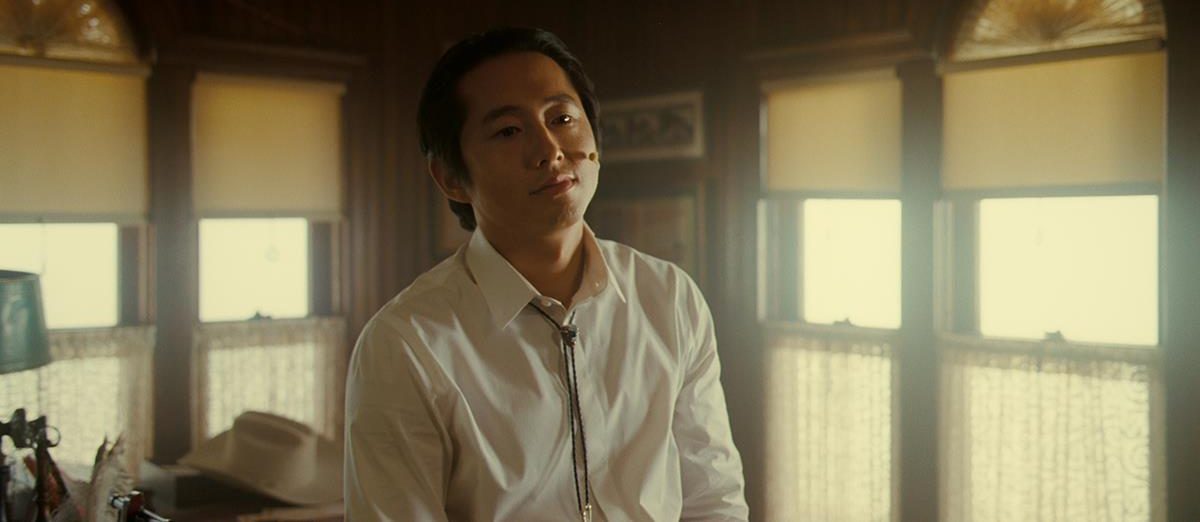
There’s a hint of The Wizard of Oz, “especially noticeable in a shot where O.J. stands in front of the Haywood family home — a humble, isolated farmhouse, much like the one where Dorothy Gale lived — watching the oncoming twister as the sky turns dark above him,” she writes.
“One of the many movie posters hanging in the Haywood family home is for the 1972 western Buck and the Preacher, directed by Sidney Poitier and starring Poitier and Harry Belafonte in the title roles,” a prime example, says Rife, of “the confluence of Black Power and Blaxploitation that led to a wave of Black westerns in the early- to mid-’70s.”
READ MORE: A Guide to the References and Easter Eggs in Jordan Peele’s Nope (Vulture)
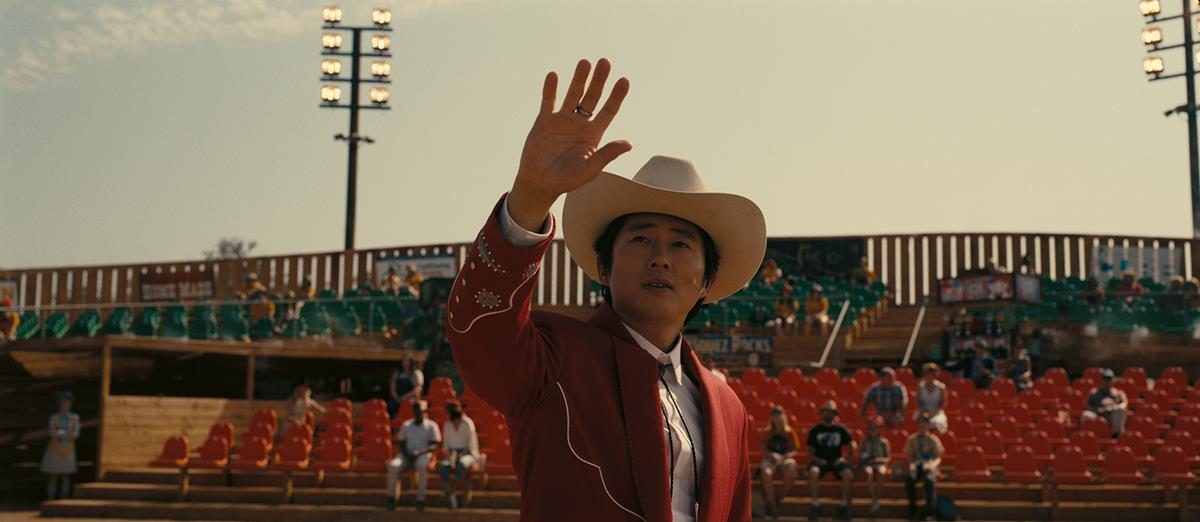
This is not accidental. “With Nope, Peele looks specifically to the history of the cinema and its intersection with the experience of Black Americans to create a backstory that virtually imbues every frame of the movie,” says The New Yorker’s Richard Brody
“Nope is a phantasmagorical story of Black people in the American West, the unwelcome among the unwelcome, and it’s set in the present-day West, namely, Hollywood and the Hollywood-proximate, the very heart of Wild West mythology,” Brody adds. “Nope is one of the great movies about moviemaking, about the moral and spiritual implications of cinematic representation itself — especially the representation of people at the center of American society who are treated as its outsiders. It is an exploitation film — which is to say, a film about exploitation and the cinematic history of exploitation as the medium’s very essence.”
READ MORE: “Nope” Is One of the Great Movies About Moviemaking (The New Yorker)

Film lover Peele also revealed to IndieWire’s Christian Zilko that the film’s UFO subject matter was conceived as an attempt to lure audiences back to the multiplexes with spectacle.
READ MORE: Jordan Peele Was Worried About the Future of Cinema, So He Wrote ‘Nope’ as ‘The Great American UFO Story’ (IndieWire)
In an otherwise vacant interview with Uproxx’s Mike Ryan, Peele reveals that he deliberately wrote a story about an extraterrestrial without any regard to how possible it was to actually film it (not coincidentally this is also the dilemma of one the film’s characters which includes a revered retired cinematographer).
“Whereas Get Out started with this notion of: what if I write a script that no one would ever let me make? And how can I make a movie that’s impossible?” Peele recounts. “Well, with the fortune of success, I’ve had greater tools I can work with. It’s very important to me to continue to push and continue to start from that same starting point of, what can I do that’s impossible? What is the movie that I’m not supposed to make? That I can’t make? That I don’t know how to make? And that was the starting point.”
READ MORE: Jordan Peele On The Secrets Of ‘Nope’ And His Love For ‘Tremors’ (Uproxx)
On his side in this endeavor was Hoyte Van Hoytema, ASC, the Swiss-born Dutch-Swedish cinematographer whose last sci-fi works were Ad Astra and Tenet.
He was tasked with filming several sequences on location day for night. Shooting day for night is a classic cinematographic problem usually overcome by placing actors at a very specific direction into the sun, preferably backlit, and then darkening the image so that it looks as if the scene is lit by the moon.
However, after testing this option, both director and DP were not satisfied with the result. “We wanted to create nights that felt spacious, epic and grand and gave us the possibility to peer into the night. Yet at the same time, we didn’t want those nights to look fake in any way,” said Van Hoytema.
They built a special rig which combined of a variety of cameras (principally the ARRI Alexa 65 with an infrared enabled chip) all perfectly aligned without parallax.
“The scale of Peele’s latest project is created specifically to be seen in IMAX,” notes Tamera Jones at Collider.
“Being the first ‘horror epic’ filmed with the iconic 15/65mm cameras for the larger and wider IMAX screens, certain shots are meant to be exclusively experienced that way. When Peele set out creating the story and vision of the film, the concept of being larger-than-life was a given.”
READ MORE: ‘Nope’ Featurette Highlights Jordan Peele’s Use of IMAX Cameras (Collider)
According to a report on the Motion Picture Association’s The Credits, van Hoytema called the experience “a very exhilarating ride. We shot on IMAX cameras, and we were not shy of doing very extreme or crazy things with those cameras.”
“When you’re shooting on IMAX you just know you’re doing something cinematically special,” Peele adds. “The image is so overwhelming it feels like you’re there. I wanted immersion, the awe and the fear and the wonder we all had when we were kids.”
READ MORE: New Video Details How Jordan Peele’s “Nope” was Shot With IMAX Cameras (The Credits)
In an interview with the cinematographer for IndieWire, Bill Desowitz points out that van Hoytema has taken IMAX to new frontiers on Dunkirk and Tenet, “going almost anywhere on the ground, in the air, underwater, and even running backward for the latter’s time-inversion technique,” but went even further on Nope. “He took the bulky camera on his shoulder and on helicopters to achieve a unique sense of grandeur and mounting terror.
“The IMAX sequences are very much anchor pieces, beginning with a bizarre opening at the Haywood ranch that’s an immediate attention grabber and has us wondering what it means,” Desowitz adds. “There’s even an IMAX camera in the movie (operated by cinematographer Antlers Holst, played by Michael Wincot).”
And, according to van Hoytema, the camera in the film is “a nod to the model used for the IMAX-produced space station documentaries in the ‘80s, including the hugely popular The Dream is Alive.”
READ MORE:“Nope:” Shooting Jordan Peele’s IMAX-Sized Spectacle of Horror (IndieWire

Big Message
The film format is not the only thing that’s larger than life about this movie. “Nope is as big a summer event film as they come,” Gerrick D. Kennedy informs us in GQ. “If the billboards or Internet hype doesn’t tell you that, just consider the fact that a stone’s throw from where our interview took place, a massive (and pivotal) set piece from Peele’s movie is now permanently erected at Universal Studios Hollywood as part of the theme park’s popular studio tour attraction. It’s the first time an attraction on the tour has opened day and date with its film’s release, and the first time a Black director has had their own attraction at the park.”

Peele tells Kennedy he was inspired to write Nope during the COVID lockdown, and that his approach to the film was shaped by the circumstances under which he wrote it. “I wrote [the film] trapped inside and so I knew I wanted to make something that was about the sky,” he says. “I knew the world would want to be outside and at the same time, I knew we had this newfound fear from this trauma, from this time of what it meant to go outside. Can we go outside? So I slipped some of that stuff in.”
READ MORE: What Makes ‘Nope’ So Subversive, According to Jordan Peele (GQ)
Peele developed the film through some very tumultuous times in American life, including the January 6 Capitol riot. This also had an effect on writing the film, as he tells Jake Coyle at AP News.
“Attention can be a violent thing and our addiction to spectacle can have negative consequences. I think sometimes if we give the wrong spectacle too much attention, it can give it too much power. If we are obsessed with the wrong spectacle, it can distract us from what’s really going on. There’s really a human need to see the unseeable that our entire society is based around. And in so many ways we see it. The last five years, it feels like we’ve gone from seeking spectacle to being inundated with it. And that’s the environment I wrote the film in.”
READ MORE: Q&A: Jordan Peele on the dreams and nightmares of ‘Nope’ (AP News)
Ian Cooper, producer and creative director of Peele’s film company Monkeypaw, reveals to KC Ifeanyi at Fast Company that a lot of first ideas Peele had around the film were visual. “I remember very early on, before there was even a plot to the movie, he had this image of a UFO as an umbrella in a rainstorm, and the feeling it would have to feel rain on the roof of your car or in your house. And then all of a sudden to feel a hard rain wash over you, which is the watershed of the circumference of the UFO, and then all of a sudden be totally without rain — what a horrifying feeling that would be. He thinks very visually and a lot of the way he builds around a movie in the very origins of it is through a series of haunting images.
READ MORE: Inside the creative swings of Jordan Peele’s “Nope” (Fast Company)

Peele is “in complete and utter command of every image he puts on screen. Nothing feels purposeless as everything we get to see almost feels destined to permanently etch itself in your memory,” says Chase Hutchinson at Collider, adding that this is “one of the many reasons that Nope may be Peele’s most accomplished and audacious film yet.”
“It fittingly becomes about characters just trying to capture one perfect shot that finds a whole bunch of great ones of its own along the way,” says Hutchinson. “This allows for Peele to poke fun at himself and the art form in which he works while still making every moment of visual storytelling absolutely sing.”
READ MORE: From ‘Get Out’ to ‘Nope,’ Jordan Peele’s Distinct Iconography Is a Visual Feast All His Own (Collider)
“It’s really what you would call a cinematic experience, that is literally what Jordan has created,” the film’s star, Keke Palmer, tells Kate Erbland at IndieWire. “It’s like nothing else that you’ve seen of his before, but yet is just as thoughtful and has so much to say as the other things that you’ve seen. But the tone of it, the way that it balances horror and action and adventure, it’s just very unique.”
“Making a movie that involves the moviemaking process is just so inherently meta,” Peele himself later reveals to Erbland. “When you’re on a set that has a set [within it], it gets very confusing. The first thing we have to acknowledge is we’re making something about what we do and we’re trying to uncover some of the insidiousness of it, and the horror specifically that comes from the search for spectacle, the addiction to spectacle, and the negative sort of whirlpools of trauma that you can get in through this industry by being addicted to the attention.”
READ MORE: ‘Nope’ Filmmaker Jordan Peele Wanted to Get ‘Inherently Meta’ with His ‘Flying Saucer’ Horror Film (IndieWire)
Regarding attention, Peele himself joined in hyping the film by sharing a link to the “Jupiter’s Claim” website on his Twitter feed, a fictional theme park that appears to be headlined by Steven Yeun’s character in Nope.
“Website visitors are immediately greeted with a salutation from Yeun’s character Ricky “Jupe” Park, who introduces himself as a “former child actor and reality TV star of ‘Kid Sheriff’ fame,” reveals Variety’s J. Kim Murphy.
“Upon clicking past the message, the sunny disposition of the website takes on a gloomy blue as the music distorts into a sinister boom. The cartoon portrait of Yeun’s cowboy has his frown turned upside-down as he glances upwards toward the sky.”
— Jordan Peele (@JordanPeele) July 1, 2022
READ MORE: Jordan Peele Offers ‘Nope’ Clues About Steven Yeun’s Cowboy With ‘Jupiter’s Claim’ Amusement Park Website (Variety)
Yeun, whose career has spanned notable roles in projects like The Walking Dead, Invincible, and Sorry To Bother You, discussed with Gizmodo’s Sabina Graves how working with Peele stands apart from his early body of work. “The thing that I have learned is in those genre setups, it’s easy to maybe rely on the tropes, but really I think we’re all looking for something deeply human and that’s what makes it unsettling,” he says.
“When Jordan asked me to be a part of this, we had a lot of conversations, and I think we could have left it at certain places where it would have ended up maybe being more of a trope. But we’ve never really let the conversation live there. It always ended at like a deeply human person… I don’t think he’s necessarily always trying to construct something that’s, like, not real. I think he’s always trying to do something that’s very real.”
READ MORE: Jordan Peele Continues to Make Genre Real With Nope (Gizmodo)
All of the guessing games about the film might have been rendered null and void had the writer/director kept the project’s working title, “Little Green Men.”
“Though that would more directly reference the concept of aliens, it’s actually a double entendre that speaks to the larger themes his story has in mind,” notes Slash Film’s Jeremy Mathai.
“I’m always talking about something human, a human flaw,” Peele said. “And there was something about our connection with spectacle and money and our monetization of spectacle. And so, the ‘little green men’ that I started talking about [were] the little green men on the money.”
READ MORE: Jordan Peele Had An Intriguing Original Title For Nope (Slash Film)
“The pursuit and poison of fame are its cardinal fixations,” agrees Wired’s Jason Parham. “[Nope] is a movie squarely concerned with exteriors, one meant to challenge the image-centric culture on which all of us feast.
“The ambrosia of suspense is not about what happens but how it happens,” Parham writes. “The end point is immaterial in Peele’s twisted jamboree of nightmares, the magic manifests en route. It’s why Nope is an ideal canvas not simply to insert Black ways of seeing in historically bereft film genres… but as a sharp comment on the toxins of social media, and how it can poison us.”
READ MORE: Nope Rightly Challenges Our Love of Spectacle (Wired)
“While it may be decidedly more sci-fi than Peele’s previous efforts, Nope still contains plenty of his signature brand of horror,” Christian Zilko says in another IndieWire article. “In fact, Peele says that the title came from his hope that audiences will yell out “nope!”
Early social media reactions to the film were positive. “Nope is out of this world. A monster mash with great performances (esp. Kaluuya) and a 50s sci-fi invasion motif. A spectacle about the horrors of spectacles,” tweeted CNN business reporter Frank Pallotta.
NOPE is out of this world. A monster mash with great performances (esp. Kaluuya) and a 50s sci-fi invasion motif. A spectacle about the horrors of spectacles.
— Frank Pallotta (@frankpallotta) July 19, 2022
Jordan Peele has been compared to Hitchcock, but NOPE shows he’s a next-gen Carpenter. Enjoy the show and don’t look up. pic.twitter.com/dGKwbXg0WF
Heather Wixson, managing editor of the Daily Dead News, was also enthusiastic: “Perfectly blends together a sci-fi spectacle w/a story that is also something of a Hollywood reckoning & it blew my expectations away. Gorgeously shot, the sound mix is thunderous & the cast all shines. Love love loved it.”
So #NopeMovie is absolutely phenomenal in so many ways. Perfectly blends together a sci-fi spectacle w/a story that is also something of a Hollywood reckoning & it blew my expectations away. Gorgeously shot, the sound mix is thunderous & the cast all shines. Love love loved it. pic.twitter.com/qdcZIvsX5T
— Heather Wixson (@MMEFXBook is available now!) (@thehorrorchick) July 19, 2022
READ MORE: ‘Nope’ First Reactions: Jordan Peele’s ‘Epic’ Third Horror Outing Belongs on the ‘Biggest Screen You Can Find’ (IndieWire)
Want More? Watch writer and director Jordan Peele talk with the Associated Press about the themes he wove into his latest horror sci-fi, Nope:



